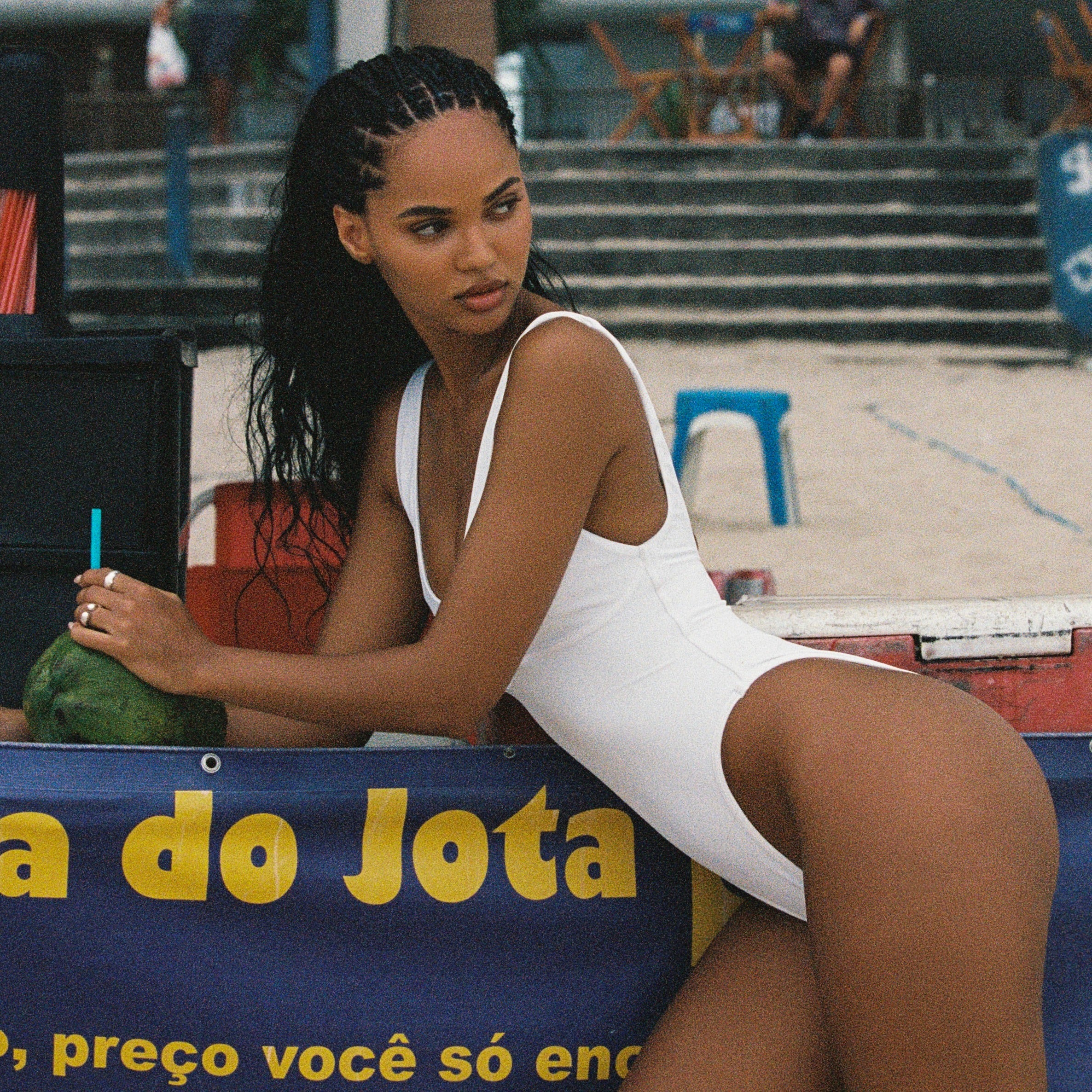Explore the world of swimwear, where fashion meets function through various fabrics. Ever wondered why your swimsuit feels like a second skin? This article will delve into the materials that shape swimwear, revealing the secrets behind fit, comfort, and style. As we uncover the story of each thread, we'll reveal the innovations that have transformed swimwear into a practical fashion statement. Let's take a look at what makes your beach attire a combination of fashion and comfort.
From the enduring durability of polyester to the versatility of nylon and the stretch provided by spandex, understanding these swimwear materials ensures you not only look good but feel great and confident in them too. So, get ready to dive into the essential guide on what makes your swimsuit your trusted companion under the sun.
The Basics: Swimwear Fabric 101
Before we get into the nitty-gritty, let's talk about the basics of your bathing suit or swimwear fabric. Choosing the type of material you want for your swimsuit is like picking a reliable sidekick for your time in the water. These materials influence how you look and feel when you take a dip.
It is important to note how these materials shape the overall performance of your swimsuit. Think of your swimsuit as a partner on your water adventures, adapting to the environment and your movements. Picking the right material is so important, especially if you’re into water activities or sports like competitive swimming or surfing
Take stretch, for example – it's what makes your swimsuit move with you. How much your swimsuit can stretch affects not just how comfy it is but also how well it fits your body. Durability is another player in the game – it decides how long your swimsuit will stick around, especially if you're a frequent beachgoer.
Then there's the resistance to elements, like chlorine and saltwater. The right fabric acts like armor, protecting your swimsuit from the wear and tear of these elements, making sure it lasts and keeps its shape. So, when we talk about the basics of swimwear fabric, we're really talking about finding that perfect match that brings together comfort, style, and its ability to last.

Synthetic Fabric: The Power of Polyester
Polyester is one of the more common swimwear fabrics that people purchase. This sturdy synthetic fiber is a big deal in swimwear because it's tough and durable. Polyester swimsuits don't just fade away – they stick around, keeping their color and shape. So, what makes polyester a top choice? It can handle the rough and tumble of water activities, and it's a solid pick for those who want their swimwear to last.
Nylon's Swimwear Revolution
Say hello to nylon, a lightweight synthetic material that's changing the game in swimwear. It's not just for the pros; it's for everyone at the beach. Nylon makes swimming suits comfy and stretchy, and it dries quickly too. Whether you're a competitive swimmer or just enjoying a day by the water, nylon brings a new level of comfort and flexibility to your swimwear.
Spandex: Stretching the Limits
Spandex is the superhero of stretch in swimwear. It's not just about a bit of give; it's about pushing boundaries. Spandex gives your swimsuit unbeatable stretch and bounces back to its original shape. So, whether you're taking a dive or lounging by the pool, spandex ensures your swimsuit fits snugly while keeping its form intact.
Sustainable Swimwear: Embracing Eco-Friendly Options
Let's talk about sustainable swimwear in this eco-conscious era. Enter regenerated nylon, a recycled material that combines fashion with eco-friendliness. Sustainable swimwear is all about making choices that go beyond the latest trends. Regenerated nylon reduces environmental impact and supports ethical practices. Choosing sustainability can redefine your connection with fashion and the planet.
Mixing It Up: Different Fabrics for Different Styles
Not all swimsuits are cut from the same cloth – quite literally. The world of swimwear fabrics is as diverse as the styles they're crafted into. From classic one piece swimsuits to the latest trendy bikini bottoms, each style has its own fabric story to tell. Let's unravel the tapestry of swimwear fabrics, exploring the distinct materials that bring unique styles to life.
#1 Classic one piece Swimsuits: Embracing Timeless Elegance
Traditional one piece swimming suits, known for their timeless elegance, often find their strength in fabrics like nylon or polyester blends. These materials offer a balanced mix of comfort, durability, and stretch, ensuring a flattering fit that stands the test of time.
#2 Bikini Sets: Versatility in Fabrics
Bikini sets, comprising tops, such as a triangle bikini top, a bandeau bikini top, or underwire bikini top, and bikini bottoms, embrace a mix of fabrics tailored for style and function. Tops may feature soft, breathable materials like cotton blends, while bottoms might incorporate stretchy and quick-drying fabrics such as spandex, providing a perfect blend of comfort and style.

#3 High-Cut Bikini Bottom: Legs for Days
High-cut bikini bottoms, designed for a leggy look, often utilize fabrics like spandex or nylon blends. These materials not only provide the necessary stretch for a flattering fit but also contribute to the trendy, elongated silhouette that high-cut styles are known for.
#4 String Bikinis: Playful and Flirty Vibes
String bikinis, celebrated for their playful and flirty vibe, typically feature materials like spandex or Lycra for their flexibility. These fabrics allow for adjustable fits and minimal coverage, ensuring a customized and flirtatious beach look.
#5 Rash Guards: Performance Meets Comfort
Rash guards, designed for active water enthusiasts, often incorporate performance fabrics such as polyester blends or specially treated nylon. These materials offer quick-drying properties, UV protection, and enhanced durability, catering to those seeking both style and functionality.
#6 Swim Shorts: Sporty and Stylish
For a sporty yet stylish beach day, swim shorts combine functionality and fashion. Fabrics like polyester or quick-drying blends are common, ensuring comfort and versatility for those who prefer a more active approach to beachwear.
#7 Monokinis: Stylish Statements
Monokinis, known for their unique blend of one piece and bikini styles, often use a mix of spandex and nylon. This combination ensures the right balance of stretch, support, and style, allowing for striking and fashion-forward beach statements.
#8 Tankinis: Blending Comfort and Modesty
Tankinis, offering a balance between a tank top and a bikini, commonly feature materials like nylon or polyester blends. These fabrics provide a comfortable and supportive fit while accommodating various designs, ensuring a modest yet stylish swimwear option.
#9 Surf Bikinis: Riding the Waves in Style
Tailored for surfers and water athletes, surf bikinis often employ performance fabrics like neoprene or specially treated nylon. These materials offer enhanced grip, quick-drying capabilities, and durability to withstand the rigors of wave-riding in style.
Care and Maintenance: How to Wash Swimsuits Properly
Now that you've dipped your toes into the world of swimwear fabrics, it's essential to master the art of swimsuit care. Here's a handy list to guide you through the ABCs of how to wash swimsuits properly, and even how to get sand out of a bathing suit, ensuring longevity and the preservation of their form. Plus, we've thrown in some bonus tips for dealing with sand and steering clear of the dreaded swimsuit cameltoe.
- Separate by Color and Fabric Type: Begin the swimsuit care journey by sorting your swimwear. Separate them by color and fabric type to prevent color bleeding and ensure that delicate fabrics receive the TLC they deserve.
- Pre-Treat Stains: If you notice any stains on your swimsuit, it's best to pre-treat them before washing. Different stains may require different approaches, so consult care labels or do a quick search for stain removal techniques specific to the type of stain you're dealing with.
- Choosing the Right Water Temperature: Most swimsuits can be washed in cold or warm water. However, if you're dealing with stubborn stains, using warm water can be more effective. Be mindful of the care instructions on your swimsuit to pick the right temperature.
- Mild Detergents for Delicate Fabrics: Opt for a mild and gentle detergent suitable for delicate fabrics. Harsh detergents can cause damage and wear down the fabric over time. Consider using a fragrance-free or hypoallergenic detergent if you have sensitive skin.
- Adjustable Straps and Avoiding Tan Lines: Pay attention to adjustable straps when washing your swimsuit. Ensure they are secured or tucked in to prevent tangling. If you're concerned about tan lines, rotate the swimsuit during drying to ensure even exposure.
- Handling Sand Removal: Sand can be a persistent beach companion. To remove sand, allow the swimsuit to dry completely, and then gently shake or brush off the sand. You may be tempted to search for how to wash swimsuits in a washing machine, but we’d advise you to avoid that as it can damage both the swimsuit and the machine.
- Say No to the Swimsuit Cameltoe: To avoid the swimsuit cameltoe dilemma, make sure your swimsuit fits well. Ill-fitting swimsuits can lead to discomfort and unwanted fashion faux pas. Choose styles that suit your body shape and provide the right coverage.
- Air-Dry for the Win: After washing, resist the temptation to toss your swimsuit in the dryer. Air-dry it by laying it flat on a towel, ensuring it retains its shape and elasticity. Avoid wringing out excess water, as it can distort the fabric.
- Avoiding Sunscreen Stains: Sunscreen is a beach essential, but it can leave stains on your swimsuit. Apply sunscreen before putting on your swimsuit, and allow it to fully absorb before getting dressed to minimize the risk of stains.
- Storage Matters: Proper storage is the finishing touch to swimsuit care. Store your swimsuits in a cool, dry place away from direct sunlight. Avoid folding them for extended periods to prevent creases, and ensure they are completely dry before storing to prevent mildew.

Navigating the Seas of Swimwear Fabric with Gooseberry
As you embark on your swimsuit journey, armed with knowledge about the materials shaping your beachside fashion, remember that the fabric is more than just threads and fibers—it's the key to feeling confident and comfortable under the sun. Each choice you make, from polyester's enduring strength to nylon's flexible versatility, contributes to your unique beach style.
Now, as you navigate the seas of swimwear options, consider elevating your swimwear collection with Gooseberry Intimates. Our commitment to quality, style, and sustainability is found in every piece. Explore our curated collection of sexy swimsuits and bikinis designed for every body type. Join us in redefining the art of beach fashion.
Sources:
- Cheeky Chickadee Store. What Is the Best Swimsuit Material?. https://www.cheekychickadeestore.com/pages/best-swimsuit-materials.
- Making Waves. Swim Gear: Choosing the Right Swimsuit Material - Start Making Waves. https://startmakingwaves.com/swim-gear-choosing-right-swimsuit-material/.
- Flanagan, Jane. What Is Swimsuit Material? – Knix. https://knix.com/blogs/resources/what-is-swimsuit-material.












